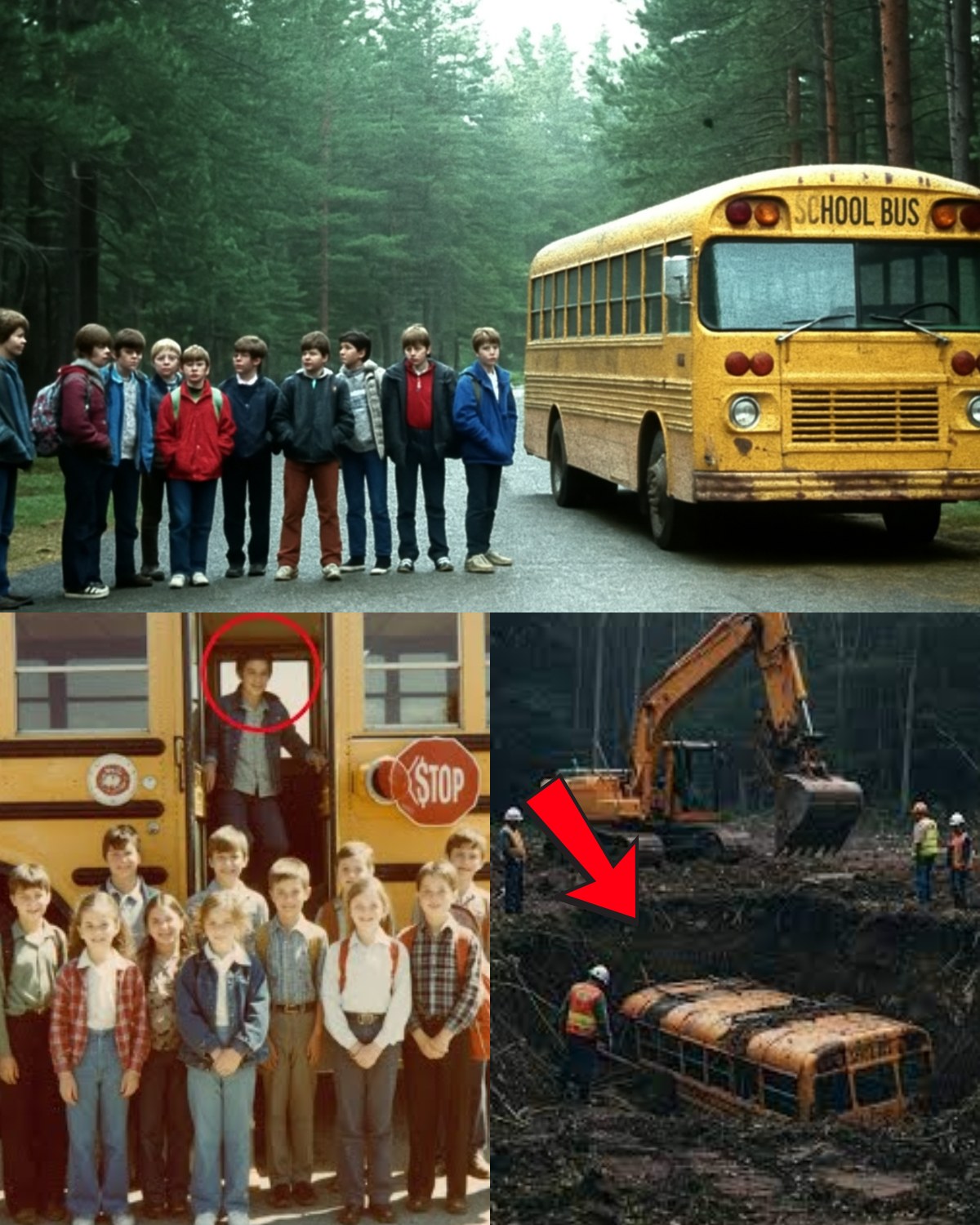15 CHILDREN VANISHED ON A FIELD TRIP IN 1986 — 39 YEARS LATER, THEIR SCHOOL BUS IS FOUND BURIED UNDERGROUND…
In the spring of 1986, fifteen children and their teacher left for a routine school field trip.
They never returned.
No one ever found the bus. No bodies. No wreckage. No skid marks on the road — only silence.
Authorities guessed it was a wrong turn, an acc!dent, maybe even a sinkhole that swallowed them whole. But no theory ever held. Morning Lake became a name people whispered but never visited — a quiet scar on a small town’s heart.
For nearly forty years, nothing surfaced.
Until last week.
A construction crew working a few miles off the old highway hit something solid beneath the soil. When the machines stopped and the dust cleared, what they saw made their bl00d run cold.
A rusted yellow frame.
Windows half-collapsed.
A number painted faintly on the side — Bus 117.
It was still sealed shut.
When investigators pried open the emergency exit, a wave of damp, earthy air poured out — the smell of time and decay. Inside, the bus was eerily preserved. Dust coated every surface. The seats were still bolted down, some seatbelts fastened as if waiting for their owners to return.
A small pink lunchbox sat beneath the third row. A single child’s shoe, green with moss, rested on the back step.
The first thing they noticed was how quiet it was inside the bus. No insects. No wind. Just the faint hum of something low, electrical — like air trapped for decades and still vibrating.
Detective Mara Ellison leaned closer to the driver’s seat. The key was still in the ignition. When she touched it, the entire bus seemed to breathe. A ripple of cold air crawled across her skin.
“Get the camera rolling,” she ordered. Her voice came out thinner than she meant.
The lens caught everything — the initials carved into the windows, the rotted seat cushions, the faint chalk drawings on the back of the driver’s seat: smiling faces, stick figures holding hands.
Then the cameraman froze.
“Ma’am… look.”
On the far side of the aisle, fifteen tiny shapes were etched into the foggy glass — handprints. Small, perfectly formed, pressed from the inside.
But that wasn’t possible.
The forensic team later confirmed what the first responders whispered: the interior showed no signs of collapse or trauma. The bus had been buried intact — as though someone had lowered it gently into the ground.
When they tried to lift it, the machinery failed. Every engine died within seconds of contact. The metal refused to move. The sound tech’s audio file that night captured something else beneath the static — a soft chorus of children’s voices singing “The Wheels on the Bus.”
At 2:17 a.m., a worker named Dalton heard knocking from inside. He laughed at first, said it was settling dirt. But when he leaned closer, a voice whispered through the emergency exit window — a voice small and breathless, as if it had been waiting thirty-nine years to be heard:
“Is it time to go home now?”
Dalton never came back to the site.
By dawn, the bus had sunk an additional two feet into the ground. The soil was undisturbed — no sign of collapse, no sound of machinery. Just gone, as if the earth had reclaimed what was hers.
The dig site is sealed off now. Officially, it’s “unstable terrain.” But locals say if you stand near Morning Lake after midnight, you can still hear an engine idling beneath your feet — and a child’s laughter drifting up through the soil, asking the same question:
“Sir… do you need a ride?”




